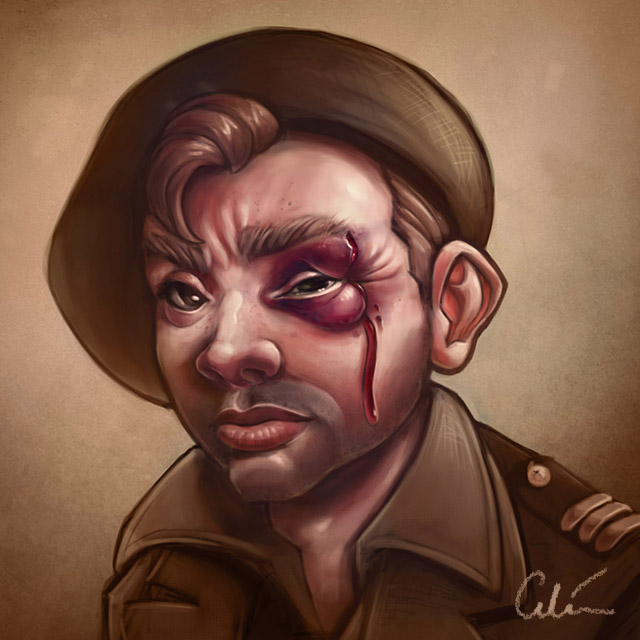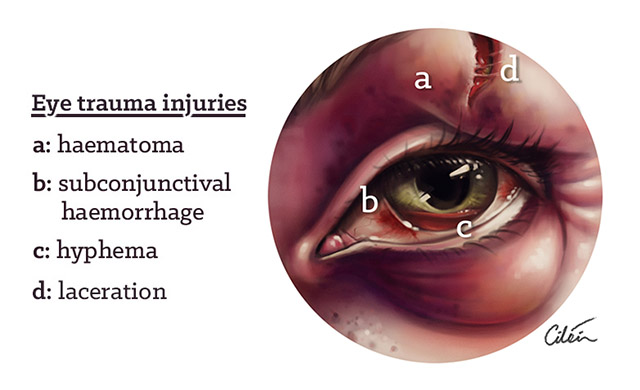The ‘black’ eye
What is a ‘black’ eye?
These are caused by bleeding under the skin, usually caused by trauma, that collects into the soft tissues around the eye. This results in a characteristic pattern of swelling and bruising that we label a ‘black eye’. Other features can include skin wounds with external bleeding, and bleeding within the eye itself, which we will take a peek at shortly.
‘Black’ eyes aren’t black
Light absorbing into and reflecting from the skin distorts the initial red colour of blood towards purple and blue hues. The colour changes over time while the injury heals, as the blood is broken down and removed from the area. It will move through red (oxygenated blood), to crimson and purple (deoxygenated blood), broken down to green biliverdin, yellow bilirubin, and lastly brown haemosiderin, before complete resolution.
Ageing a bruise
Old medical and forensic textbooks used to make grand claims that you could use bruise colours to determine exactly how long ago the injury was. This has been disproven by numerous studies, using objective colour measurement tools (spectrophotometry), photography of injury series, etc. The speed of bruise resolution will vary with individuals age, health, and local factors at the wound site like blood flow. The colour of bruises varies with the stages of blood breakdown, the skin colour, etc. So we really can’t put exact timelines to bruises, beyond a general idea that yellowing bruises tend to be older than red/purple ones.
Clues to the cause – lacerations
It takes a significant amount of force to cause bleeding under the skin, and so there may be evidence of what caused the trauma. This can take the form of a pattern in the bruise (eg knuckle ‘prints’), or a break in the skin resulting in a wound. Both tend to occur over bony prominences (sticky-outy bits). A laceration is a wound from the shearing force of blunt force trauma. It tends to have a ragged edge, unlike the clean break a blade might make.
Subconjunctival haemorrhage
This is bleeding under a thin, transparent layer over the white sclera of the eye, due to rupture of small blood vessels on the surface of the eye. Despite a perhaps alarming appearance, they do not have much clinical significance. They are usually painless, and can occur spontaneously or with minimal insult (eg sneezing).
Hyphema
Trauma to the eye itself can result in bleeding in the anterior chamber, which is a transparent bulging over the iris (coloured part of the eye). Blood will pool here painfully and obscure vision; it is sight threatening if not promptly treated.
That’s it for now on ‘black’ eyes. If you liked what you saw and want to see more of my health and injury illustrated explorations; please share the post, follow me as ‘artibiotics’ on social media, and subscribe to the mailing list to keep up with new medically illustrated shenanigans as they drop!




